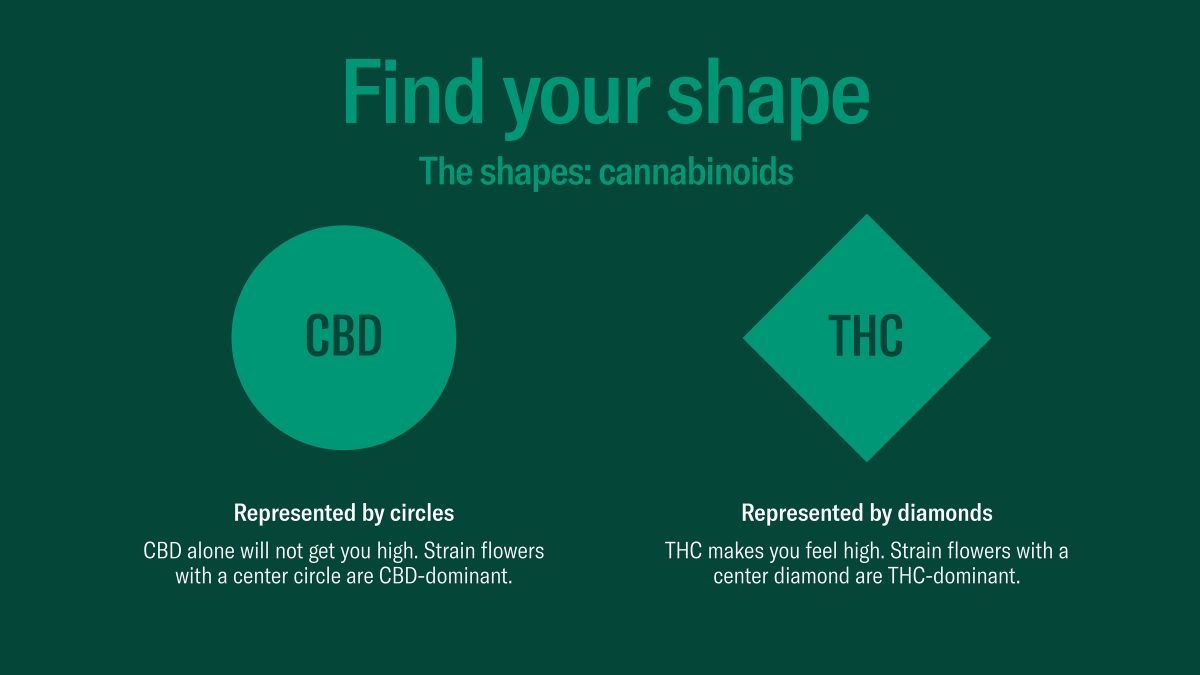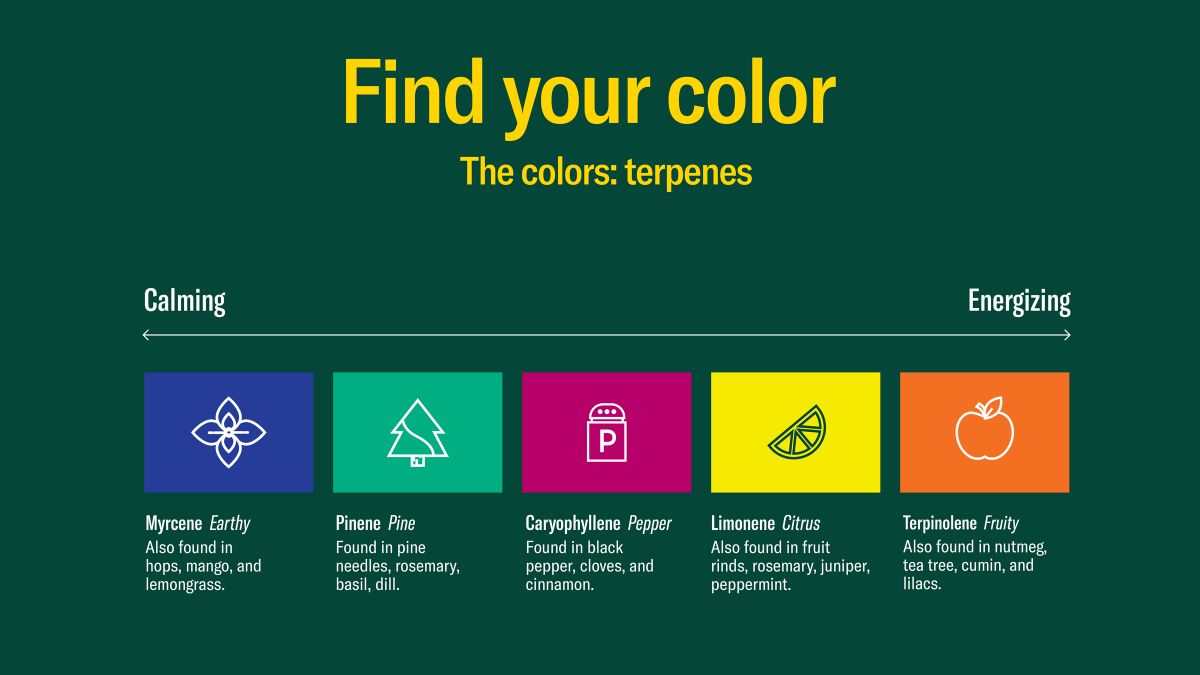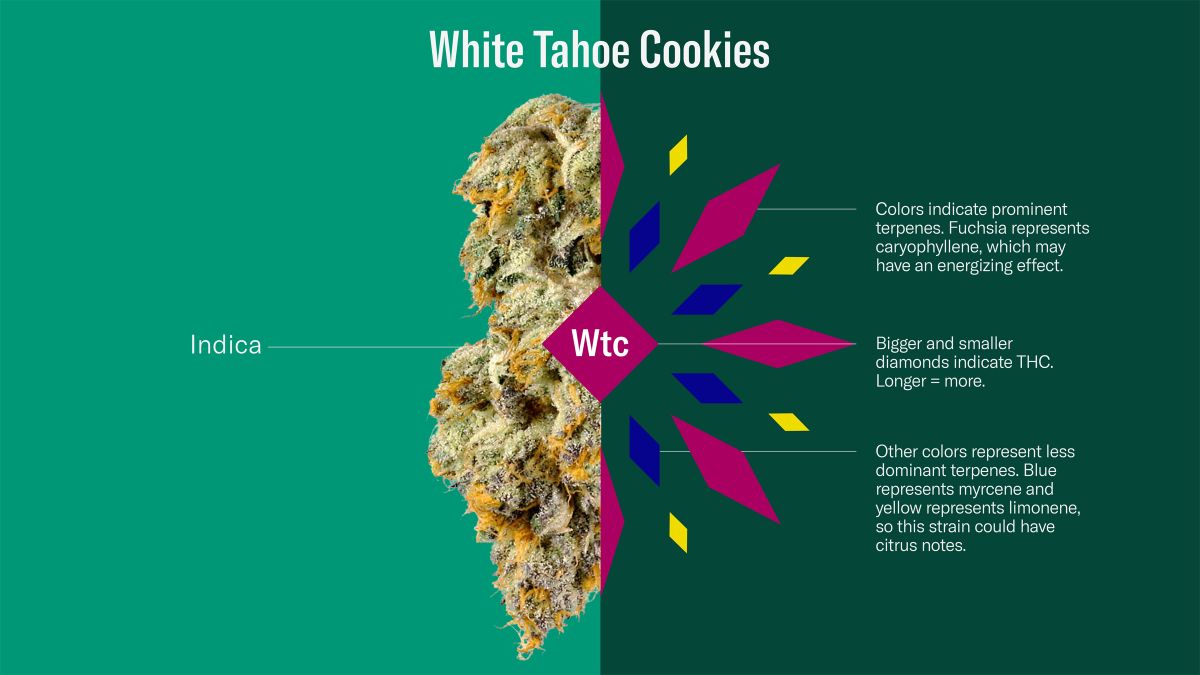Leafly develops new visual language for cannabis
Cannabis technology platform Leafly introduced a visual language to help consumers better understand cannabis strain traits, as seen above with White Tahoe Cookies. (Courtesy Leafly)
Headquartered in Seattle, Leafly is the world’s leading cannabis technology platform that helps global customers discover products by providing reliable information.
Consumers can use the Leafly website and mobile app to learn about the right products for their lifestyle and wellness needs. Then they can find these products from licensed and regulated retailers in their area.
At the end of 2019, Leafly published the Leafly Cannabis Guide, a tool for consumers to not only learn about cannabis in general and the various strains, but a better way to perform research. The guide uses data-based visuals to help people discover the best cannabis strains.
“Leafly has been at the forefront of shaping the conversation on cannabis and demystifying this rapidly evolving product and industry,” said CEO Tim Leslie.
But he also said some aspects of cannabis can remain mysterious, even among consumers.
“As our understanding of cannabis grows, so does our need for a more sophisticated, yet intuitive language to help people navigate the very personal effects cannabis has, and while indica, sativa, and hybrid are starting points for understanding, this form of categorization doesn’t take advantage of our growing understanding of the effects of the various compounds found within the plant,” he said.
For decades, cannabis plants have been classified as indica, sativa, or hybrid, often focusing only on the distinct physical features of each plant. Typically, sativas grow tall and thin, while indicas grow short and stout.
Because indicas and sativas have specific physical traits, this has led to an assumption that each has certain effects. The truth is that regardless of whether a strain is an indica or sativa, its chemical profile – that is, the cannabinoids and terpenes in it – determine how it affects you, not physical features. Additionally, decades of crossbreeding and hybridization has made it so some strains thought to be sativas are actually indicas, upon genetic analysis.
In a 2010 article by Dr. Ethan Russo, a pioneer in the study of the body’s endocannabinoid system, he explained the importance of cannabinoids and terpenes and the benefits they can create. This is referred to as the “entourage effect.” The entourage effect is how all cannabinoids and terpenes work together with other compounds in the body to unlock the wellness benefits of cannabis, not just THC and CBD. This is why certain components of cannabis provide benefits, such as relief from pain, inflammation, depression, anxiety, and more.
The Cannabis Guide
Exploring strains that suit your unique body and needs is an important part of discovering cannabis, but can also be frustrating. Many can relate experiences of purchasing a strain expecting one experience, and having the opposite, even a negative experience. Because all bodies and settings are different, the same strain can affect two people in different ways and in different circumstances.
With Leafly’s Cannabis Guide consumers can now study colors and shapes on a flower-shaped label to understand what elements in one strain may or may not suit them.
In the same way an alcohol drinker might choose an IPA over a stout, or a Riesling over a Pinot Noir, by providing accurate source data, cannabis consumers can be confident in knowing a strain’s chemical composition indicated by the visual “flowers” on the label. They will also be able to check the reliability of strain names.
Leafly’s Cannabis Guide represents the average of all data from lab partners. Which means when someone looks at a particular strain like “Blue Dream,” its chemical profile will be shown as an aggregate of samples of this plant from hundreds of growers. If a grower produces a product that they market and sell as “Blue Dream,” but it doesn’t align with the average of Leafly’s data, consumers can question whether or not it’s right for them based on how it differs.
Using the Guide
The Cannabis Guide provides visualizations of strain profiles to better explore the complexity of cannabis using easily recognizable shapes and colors.
These include:
• Diamond = THC, meaning it may get you high.
• Circle = CBD, meaning it will not get you high but may help pain.
• Diamond/circle in the middle indicates whether THC or CBD is more dominant
• Shorter diamonds: A THC strain to get high but not too strong,
• Only circles: Don’t want a high at all.
• Circles and diamonds: Combination of THC and CBD.
• Colors. Various terpenes, which are naturally occurring tastes and fragrances. Some may appeal to individuals more than others, such as Myrcene (blue), which has an earthy smell, or Limonene (yellow) which has a citrus smell.
Leafly’s Cannabis Guide also combines its unique data with online customer reviews. This means that anyone, regardless of cannabis experience, can easily learn supplemental information such as cannabinoid profiles, potency, dominant terpenes, and customer-reported effects.
The Cannabis Guide will give you a baseline to better understand what’s in a strain before purchase and help you begin to determine what strains are best for you.
“It’s really about helping consumers find the right strain and the right product as quickly and easily as possible,” said Nick Jikomes, Leafly’s principal research scientist. “We want people to see the difference between products when a real difference exists. We want you to be able to see with your eyes what you can’t smell with your nose.”
Whether it’s on the Leafly app or Leafly.com, Leafly’s goal is to empower customers to discover the best cannabis products for them. There is an ever-growing range of legal cannabis products as broader legalization gains global momentum, and Leafly plans to remain a mainstream voice providing customers with current cannabis information and content.
Kate A. Miner has a degree in visual anthropology, and has worked in marketing and advertising for many years. She writes, takes photos and teaches yoga.


